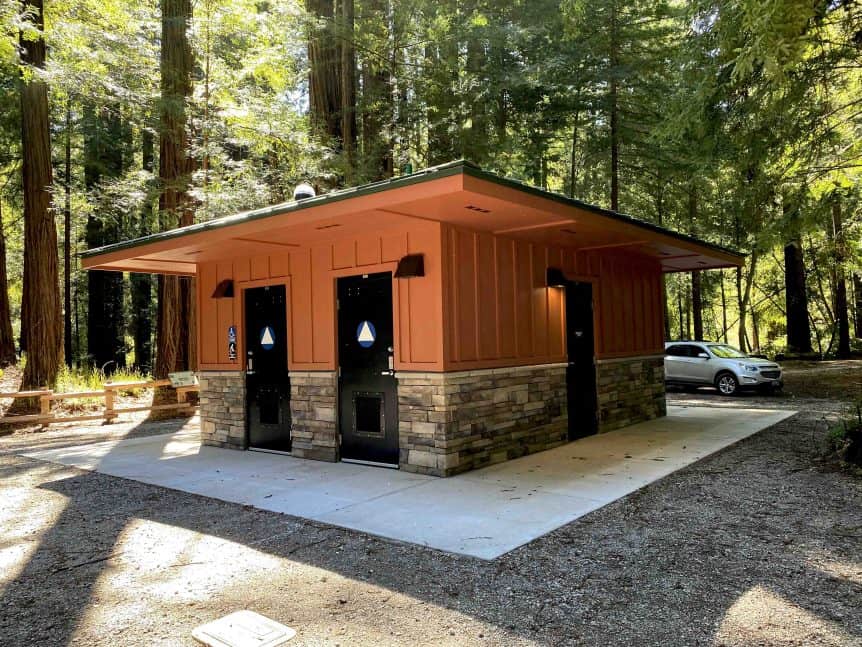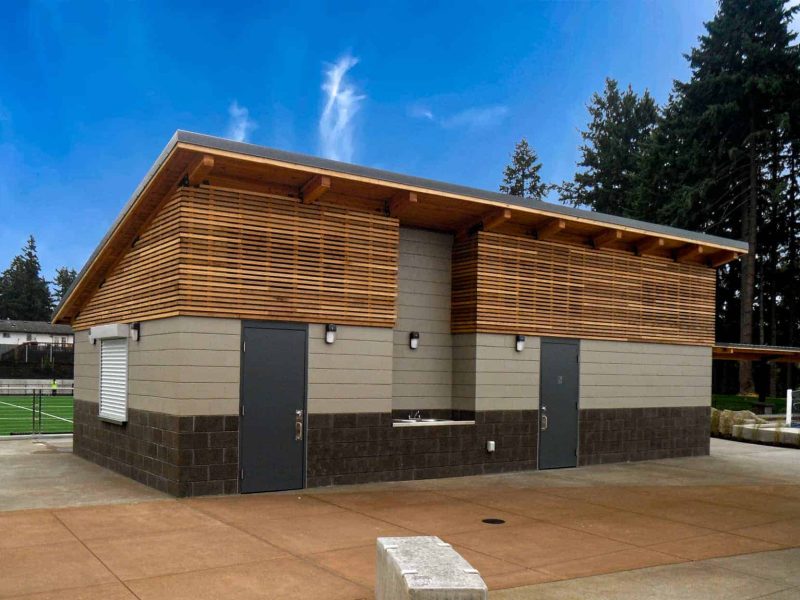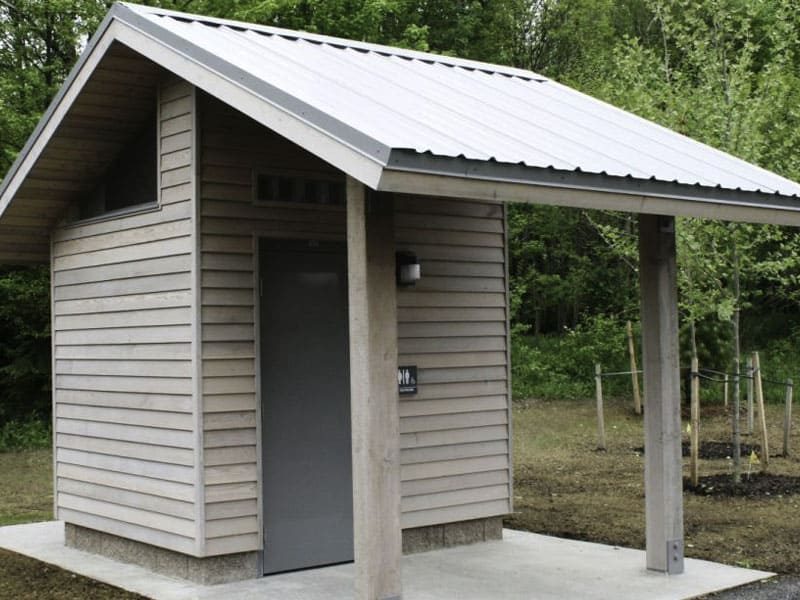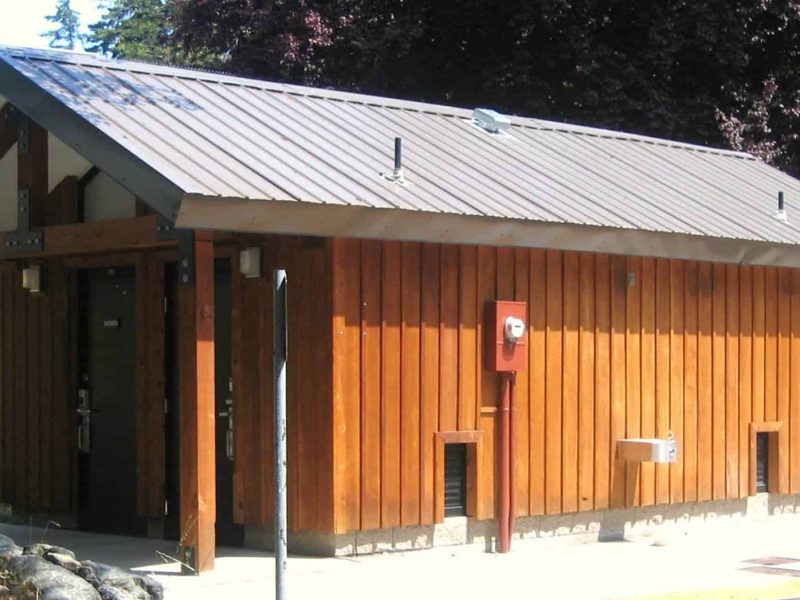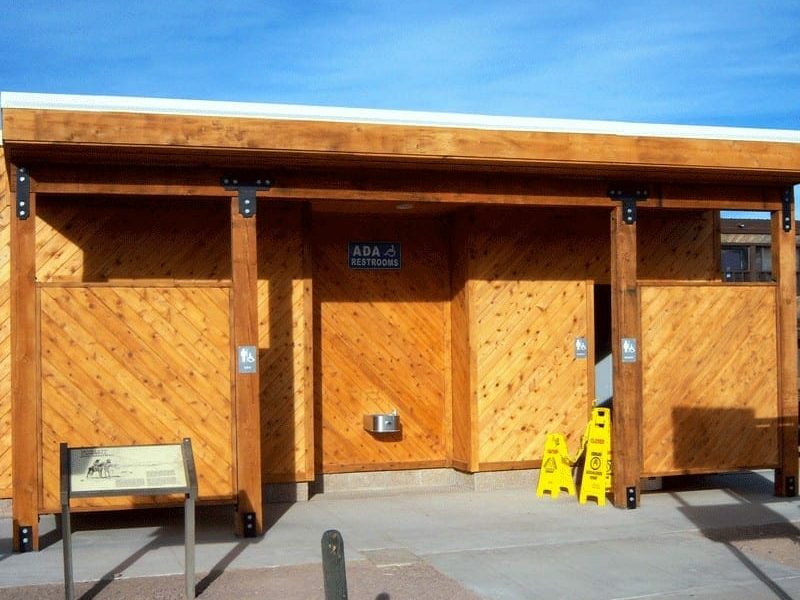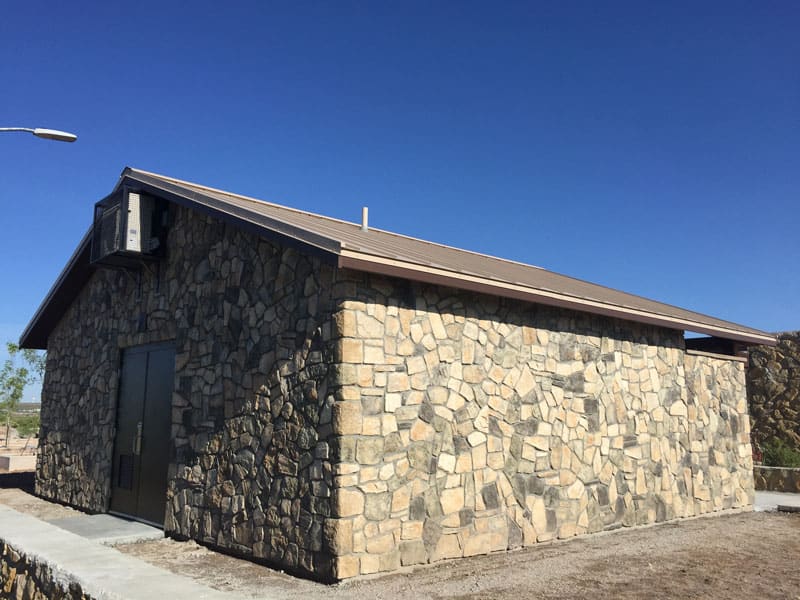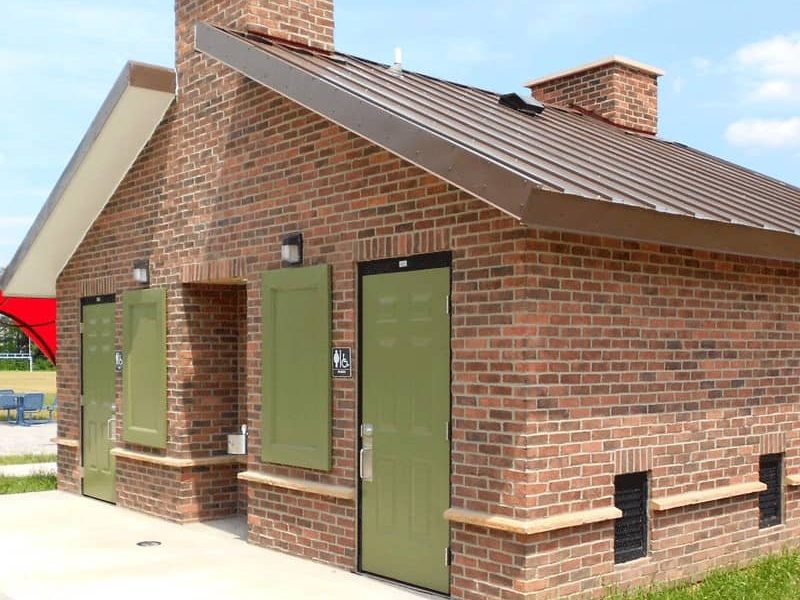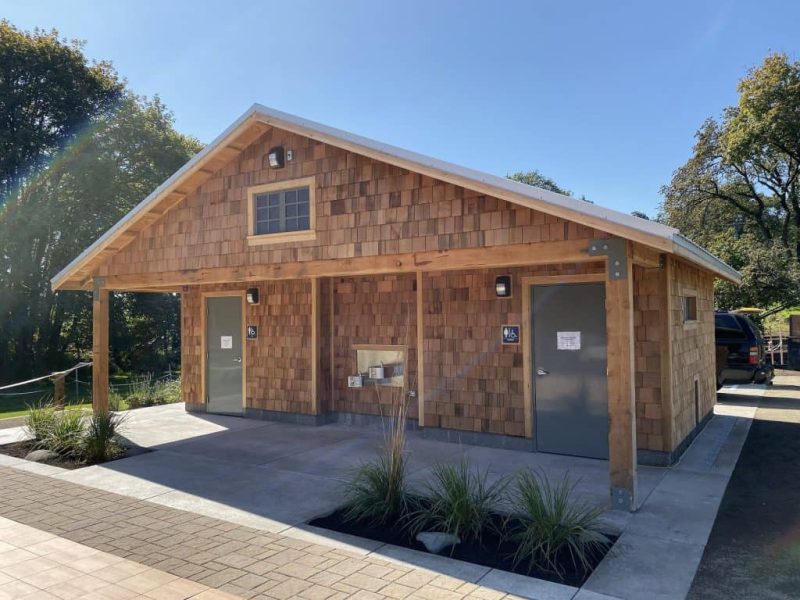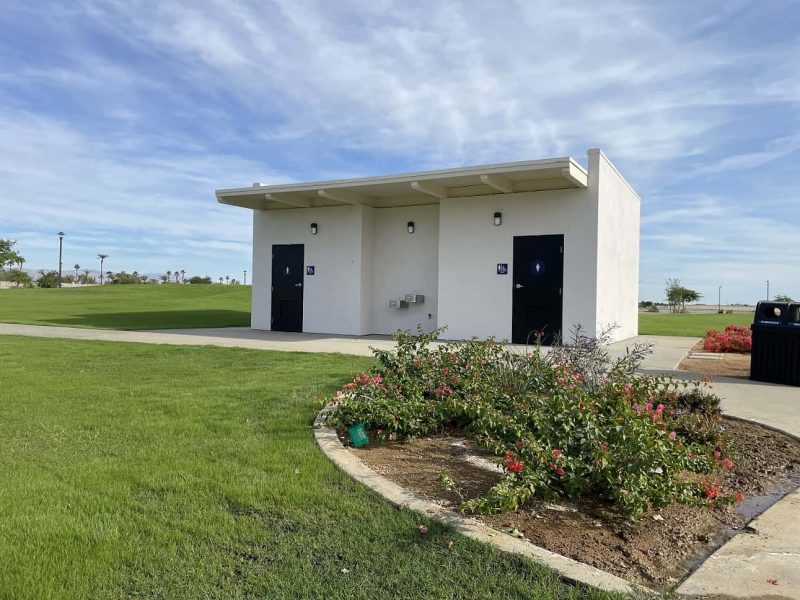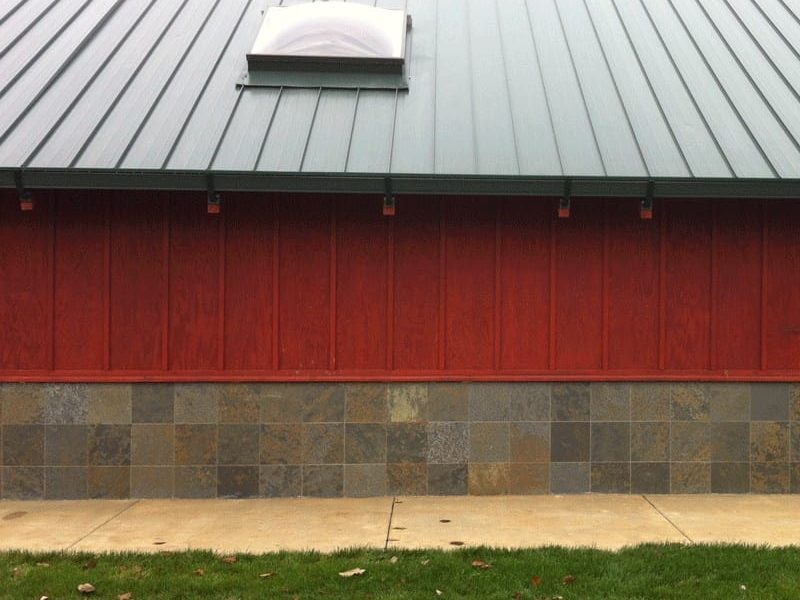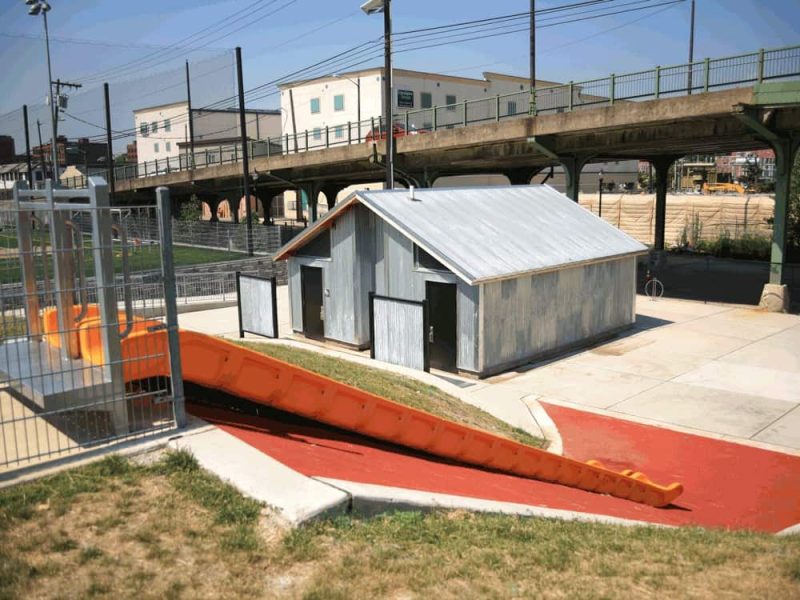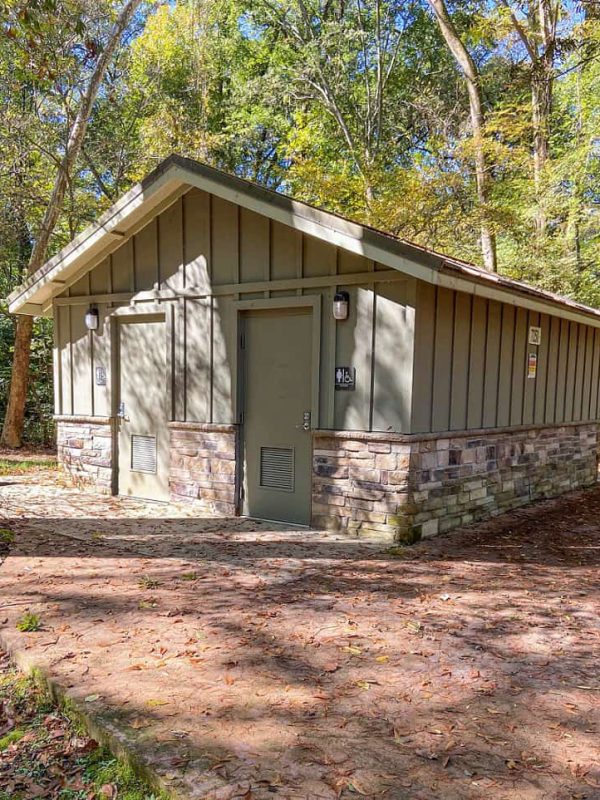Romtec can design restrooms, showers, concessions, and many other building types with a wide range of options for exterior siding. Getting the right type of siding can be an important aspect of a building. Siding is one of the most prominent visual elements of the building, and in many projects, customers need the building aesthetics to match existing structures and themes. Romtec can supply the siding options needed to make any building look great and blend perfectly with an existing environment.
Lap Siding
Lap siding is a common form of siding that is frequently used on Romtec buildings. This type of siding is installed in rows where each new row overlaps the previous. This configuration prevents moisture from reaching the structural components of the building and is also where the siding gets its name. There are several common forms of lap siding. Fiber-cement siding, also called HariePlank, is a durable and low cost option for lap siding. HardiePlank can also be colored during manufacturing in a very wide range of color options. Cedar lap siding is a classic option. It has a strong visual appeal and is highly resistant to decay. Vinyl materials can be found in both planks that overlap, like the previous two options, and in large sheets that are molded to look like overlapping rows. Sheet metal lap siding is frequently found in this type of option. Both vinyl and sheet metal can be painted or colored in near limitless options.
Board and Batten
Board and batten siding is a long-used finishing technique for American structures. In some places, this is also called barn siding because of its wide use in barn construction. Board and batten siding is created by installing boards, usually vertically, along the length of a wall. Then, thin strips called battens are installed over the top of the seams between the boards. This siding gives the building texture and depth from the battens with a clean, paneled appearance. The battens also prevent moisture and wind incursion at the board seams to protect the structure. Board and batten siding is typically made of wood planks, but it can also be made of HardiePlank, cedar, and vinyl materials, depending on the preferences of the customer.
Tongue and Groove
Tongue and groove siding is similar to lap and board and batten siding. The major difference is that tongue and groove siding results in a flat surface. Lap siding and battens result in raised edges along the seams of the siding. Tongue and groove siding does not have any protruding features. Each board is milled with a “tongue” on the leading edge and a “groove” on the trailing edge. During installation the tongue is fitted into the groove typically with glue and the board is fastened to the structure. This creates a near seamless joint that does not allow water to penetrate the siding. This siding option is available in the same types of materials as discussed in the previous sections.
Stone
Stone siding describes a very wide range of options. It is typical with stone siding to use traditional regional stone materials to create a specific look. In Texas, for example, locally mined limestone is a common siding material throughout the state. There are many other types of regional stone materials such as lava rock, sandstone, and river rock, and these can be a requisite appearance in some areas of the country. A more common source of stone siding is available with stone veneer. Typically, stone veneer is concrete that is molded and colored to replicate the appearance of natural stone. This type of siding cost less and also weighs less, limiting the structural loads.
Brick
Brick is a traditional construction material that is firmly placed in the fabric of many cities and regions. It is still widely used, but in many cases brick siding can be cheaper and easier than brick construction. When brick is used as siding, it can be installed as an exterior shell that is not designed to support the building structure. This method can also be achieved with thin bricks that just give an outward appearance of typical brick walls. The final option for brick siding is brick colored concrete veneer that is molded to look like a brick wall. Brick veneer the same as stone veneer in that it costs less, weighs less, and is easier to install.
Shingle
Shingle siding, also called shake siding, is similar to lap siding; however, instead of stacked rows of overlapping boards, the rows are compiled of shingles or shakes. Shingle siding is frequently used as an accent to a building, but in some regions and applications it is popular for siding the entire building. There are a lot of installation options available with shingle siding. Not only are shingles available in a lot of materials but they can be manufactured in different shapes and installed in different patterns. Shingle siding can be installed in uniform straight lines with a standard shingle width, or it can be done randomly with varying widths and lengths. This siding option is diverse and customers should clearly specify their preferences when asking for this siding option.
Stucco
Stucco is a popular siding material, especially in the Southwest of the US. Stucco is a type of plaster that is applied to the walls of a building. The stucco material can be colored itself, depending on the type of plaster material mixed with it. The natural colors can be white, beige, brown, red, gold, orange, and others. Additionally stucco can be painted to any color of choice. Of all the siding options, stucco typically requires the least amount of maintenance and offers the best insulation benefits. Stucco can also be visually enhanced by adding different types of aggregate often referred to as “dash” (describing how the aggregate is applied to the stucco).
Tile
Tile is another siding option that is often used as an accent to the building on a wainscot or gable, but it can also be used on the entire building. Tile is available in a number of materials such as stone tile, ceramic tile, fiber-cement tile, clay tile, and more. Tile can be installed to fit snug or it can be installed with wide grout lines and with preferred grout colors. Tile can also be installed in standard grid layouts or with intricate mosaics. Romtec can design tile siding in any preferred style, but it is important to find an appropriate contractor when choosing more intricate arrangements.
Corrugated Metal
There are several types of sheet metal siding options, but the most common and familiar type is corrugated steel or aluminum. Corrugated sheet metal is easy to install and can be painted or powder coated to any preferred color. Corrugated sheet metal is a common siding option for storage or utility buildings because it is durable, but it is used frequently to accent the appearance of other types of buildings.
Combo
All of the options discussed in the blog can be, and frequently are, installed in combination. There are a lot of styles for combing siding options but the most common applications are with wainscoting, gables, privacy walls, and facades. Deciding which way to combine siding options is all about the preference of the customer, but there are some common pairings. There are many examples of buildings with lap siding wainscot and board and batten walls. There are also a lot of buildings with tile wainscot and stucco walls. These choices can often reflect a regional norm or materials, but it is completely up to the customer.

